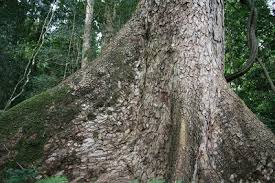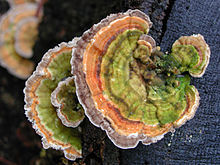
The Gondwana Rainforests' Plants
The Gondwana rainforests have a wide range of important and interesting plants due to it's connection with the once super-continent Gondwana. The Gondwana Rainforests have the most ancient type of vegetation in Australia, few places on earth contain so many plants and animals that are almost identical to their ancient ancestors. There is a concentration of primitive plant families, that are directly linked to flowering plants existing over 100 million years ago, as well as some of the oldest elements of the world's ferns and conifers.
The Giant Red Cedar Tree is an important one in Australias history wih it being reffered to as 'Red Gold' for it's huge amount of high quality, nicely coloured wood which was used in funiture a lot. But due to it's high demand the canopy reaching trees are very close to being just a memory. The main replantation purpose is for reforestation as the few existing ones provide shelter from heavy rainfall and also act as homes for a few species of animals such as butterflies. If we were to lose this 'Red Gold' we wouldn't be losing much except maybe a little bit of shelter and a home due to it's severe devastation in numbers thanks to deforestation. They do not play a 100% vital role in the ecosystem of these rainforests.

The Elkhorn Fern is the most common and widespread fern species in Australia and is one of 18 different species that are often called Elkhorn or Staghorn due to their uniquely shaped fonds. There are two types of fonds, shield fonds and fertile fonds; the shield fronds are deeply lobed, whilst the fertile fronds stand semi-erect or nodding, becoming pendulous with age. In some cases these interesting plants provide shelter from heavy rainfall and also a food source for some select animals. If we were to lose them there would be a small impact as they do not have an extremely vital role as they are not a common food source, do not provide large spaces of shelter and are spread throughout the rainforests all over the world.

Bracket Fungi is part of the Polypores family. It gets it's name 'bracket fungi' from the fact that it attaches itself like brackets to the side of tree and then grows outwards creating step like platforms. It is the most common type of Fungi to be known to give diseases to the host which can harm or kill it. They are very resilient Fungi and last for years after a treee has died by feeding of the dead wood. If we were to lose this species there might be a slight benefit for the trees of the rainforests as they have a chance, based on species, of killing the host.

Most reserves are affected by weeds. Weeds of major concern are mistflower, lantana, camphor laurel and Madeira vine. Biological control options are being investigated but weeding is currently the only option for control.